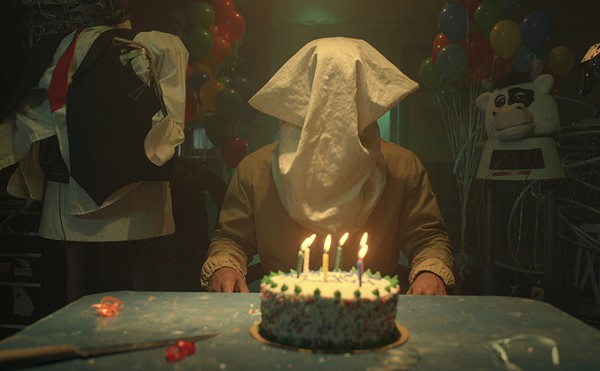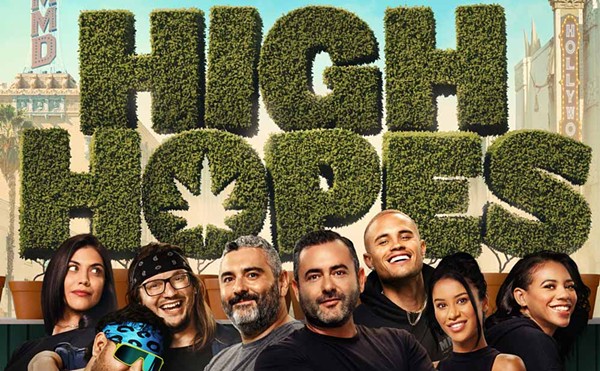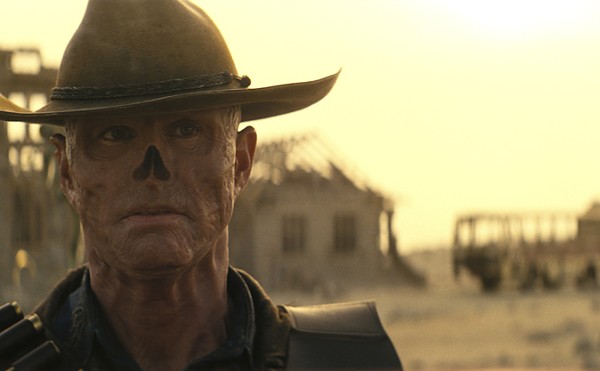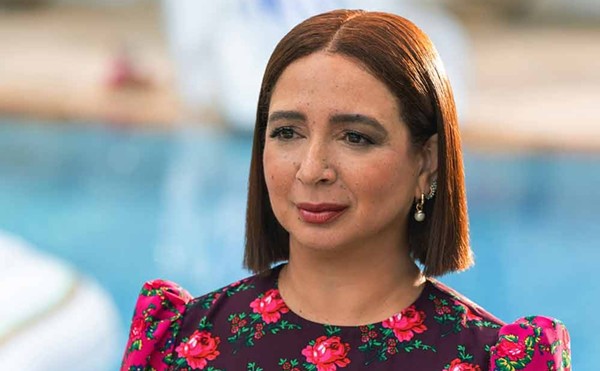It's a bright afternoon in late winter, and inside the intimate Bailey's nightclub at the Sheraton Biscayne Bay in Miami, the joint is jumping. Bebo Valdes and Israel "Cachao" Lopez, two Cuban-born octogenarian musicians who star in "Calle 54," filmmaker Fernando Trueba's loving tribute to the joys of Latin jazz, are in the heat of an afternoon rehearsal with percussionist Luis Miranda.
Cachao, the bass great and longtime Miami resident, stout and smallish, is plucking, strumming and bowing the strings, and occasionally slapping the back and sides of his instrument for percussive effects. Bebo, tall and slim, a resident of Sweden since the early '60s, is caressing his piano with long, lean fingers. As they glide through a set of venerable Cuban folk songs, the two exchange knowing glances -- just as they do in the film during a delicately nuanced performance of the classic "Lagrimas Negras."
Bebo, a soft-spoken, polite man, is having difficulty containing his enthusiasm. "Get it, Luis," he tells the conga player (a veteran of the band Machito) in Spanish. And a few minutes later: "We're rocking."
A similar fervor infects "Calle 54," an invigorating survey of the contemporary Afro-Cuban and Brazilian jazz scene. Never before shown in Orlando, "Calle 54" (which premiered in 2000) will be screened on Saturday, Jan. 26, as part of the annual Zora Neale Hurston Festival of the Arts and Humanities. In the movie, which is more of a concert film than a documentary, the noted Spanish director Trueba mixes expository sequences with sumptuously photographed and recorded performances of his own A-list of artists, all caught at the fabled Sony studios on 54th Street in New York (hence the title; calle is Spanish for street).
It's an all-star show, one greeted with multiple ovations last March at the Miami Film Festival. The late Tito Puente is on hand, offering a short, colorful tour of his New York restaurant. So is Cuban piano giant Chucho Valdes, solo and in a sweet duet with his father, Bebo. Also shown is Chucho's old Irakere bandmate, alto saxophonist and clarinetist Paquito D'Rivera (but not their one-time colleague Arturo Sandoval).
The underappreciated pianist Elaine Elias, accompanied by bassist Marc Johnson and Satoshi Takeishi on a lilting Baden Powell tune, represents Brazil. Six-string electric-bass wizard Anthony Jackson and drummer Horacio "El Negro" Hernandez join Michel Camilo, the Panama-born pianist and composer, for the leader's "From Within," one of the most thrilling pieces of the movie.
Other contenders: an updated version of Chico O'Farrill's "Afro-Cuban Jazz Suite" by his big band, or decidedly bohemian trumpeter-percussionist Jerry González's version of "Earth Dance" with a quintet featuring his brother Andy González on bass. Gato Barbieri, the Argentinian-born hitmaker, is there, too, in all his hokey glory.
Filmmaker Trueba's own passion for Latin jazz was ignited during the early '80s when he was given a copy of D'Rivera's "Blowin'" album by Nat Chediak, founder of the Miami Film Festival and author of the Spanish-language Dictionary of Latin Jazz. For the one-time Bruce Springsteen fan, it was love at first hearing, says the 46-year-old director of "Belle Epoque," the 1994 Oscar winner for best foreign-language film.
"I think the sound that Paquito has, the way of soloing he has, makes you fly, throws you through the air," he says. "I love that."
It was on Miami's Lincoln Road, during the shooting of a Latin jazz show for the final scenes of his 1996 "Two Much," that Trueba determined to make a music documentary. (The filmmaker previously had been impressed by the likes of Martin Scorcese's 1978 concert documentary of The Band, "The Last Waltz," and Jonathan Demme's 1984 Talking Heads film, "Stop Making Sense.")
"Calle 54" most certainly is a love fest, a high-energy celebration of a form of music -- essentially, the rhythms of South America and the Caribbean mixed with the harmonies and melodies of jazz -- that often gets short shrift. Hispanic-oriented radio stations usually stick to Latin pop, while jazz radio stations often leave Latin jazz out of the mix.
Says Bebo: "It's a perfect film because it shows all over, not only to the United States but to South and Central America, what this combination of music is all about." Adds Cachao: "People like Bebo and me hold on to the roots, the root of the culture, and if they don't capture it on film it will be lost forever."
A conventional strategy for shooting the film might have been to take a crew to concerts around the globe. Trueba chose instead to shoot brief biographical sketches at a variety of locales -- Jerry González in Puerto Rico; D'Rivera in suburban New Jersey -- and summon the musicians to Sony studios, where six Panavision cameras captured what amounts to a series of private performances.
"I wanted the best possible sound and to have a unity of sound," Trueba says. "That's why I brought all of them to the same studio with the same recording engineer [Thom Cadley]. I can't make a musical movie and have everyone sound like a different thing. It would be a mess. That would have been to make cinema more important than the music in the movie, and that would have been a mistake. I wanted to (elevate) the music over the cinema. I wanted the music to be real, to be live."
There's an affecting bit of reality programming in "Calle 54," which Trueba describes as "a fiction movie where the (musical) pieces were the script." It arrives with the reunion between Bebo and Chucho Valdes, who have seen each other only occasionally during the last four decades; this was their first meeting in five years. It's a tender moment and a genteel musical conversation, as the masterful Chucho shows deference to his single greatest influence on "La Comparsa."
"It's like an epilogue for the movie," Trueba says. "It's like closing the thing, to put together a father and a son, to put together the old way of playing and the new way of playing. That was a beautiful love scene. Looking at each other -- that's for real. The cameras were there. I was watching that, how they smiled at each other, and I was in awe."















